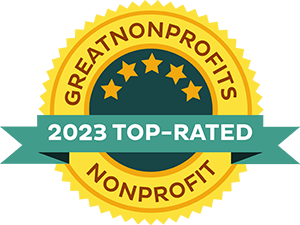By Dr. Kristen Paglia, Executive Director of Education & Programs
I believe that creativity will be the currency of the 21st century. – Dr. Gerald Gordon, CEO Fairfax County Economic Development Authority
Creativity is widely regarded as one of the most important traits for “21st Century success.” Frankly, I can’t think of a time in history when creativity was not important for success (if not survival), but the trait has gained new appreciation from business and education leaders in the age of technology and globalization. According to a 2010 IBM survey of more than 1,500 Chief Executive Officers from 60 countries, CEOs “believe that – more than rigor, management discipline, integrity, or even vision – successfully navigating an increasing complex world will require creativity.” The creative industries account for one in ten jobs in California, and contributed $155 billion (8%) to the Gross State Product (see the 2013 OTIS Report on the Creative Economy). With student success in school, work, and life at the core of P.S. ARTS’ mission, ensuring that our arts education programs foster creativity in the 15,000 children we serve is paramount.
Through the generosity of the Herb Alpert Foundation, the W. M. Keck Foundation, and Roll Global LLC, P.S. ARTS launched a 2-year longitudinal study in 2011 with the Centers for Research on Creativity to measure participants’ creative development. Using the Next Generation Creativity Survey (NGCS) to measure “key aspects of individual creative thinking, behavior, and motivation in the arts, sciences, and social problem-solving,”[1] 300 4th grade students in 16 classrooms were assessed pre and post-participation in 33-week P.S. ARTS residencies in which they received 11-week rotations of music, theater, and visual arts instruction unified by an overarching theme – The Tree of Life: Roots and Branches. These students will be followed at least through 5th grade to support a longitudinal perspective on their creative growth while participating in the P.S. ARTS program. “Creativity,” as measured by the Next Generation Creativity Survey protocol, refers to a commonly accepted definition of creativity as the production of ideas, designs, or products that are new or novel, and also valuable. The NGSC uses traditional scales of originality, flexible thinking, and problem solving, as well as developmental scales in self-efficacy beliefs, empathy, and collaboration skills.
Findings after the first year indicate that P.S. ARTS students demonstrate significant gains in creative thinking skills, surpassing their peers with less arts education. Moreover, principal investigators Dr. James Catterall and Kim Zanti found that P.S. ARTS students exhibited gains in an array of skills associated with creativity and college and career success, such as confidence in their ability to generate new and valuable idea, and openness to collaborative problem-solving.
P.S. ARTS programs measurably help prepare students for school and career success in the 21st Century by supporting their creative development.
As noted in the full report submitted by the Centers for Research on Creativity, “These are impressive results for creative growth. The sizes of the gains in the three clusters are large in general comparison to results in other programs in our pilot study.”
Participation in P.S. ARTS is associated with gains in students’ ability to…
Generate original ideas.
Solve problems creatively.
Collaborate with others.
Consider others’ feelings and ideas.
Produce ideas, designs, and products that are novel and valuable.
These findings on students’ ability to come up with great ideas and cooperate with one another to solve creative problems are some of the most significant in terms of preparing them for college and career success. As the researchers point out, “When we consider the results… First is an effect on fluency with ideas – the ability to come up with new ideas that have value. Second is the ability to work with others – valuing the ideas of others and willingness to give up one’s own ideas to move a group process ahead. If this was all we could say about the effects of P.S. ARTS residencies, we would be saying a lot.”
[1] Catterall, J., & Runco, M. (2012). Next Generation Creativity Survey: Measuring Creative Thinking and Motivation in the Arts, Sciences, and Social Problem Solving. Topanga: Centers for Research on Creativity with support from the Walt Disney Company.





